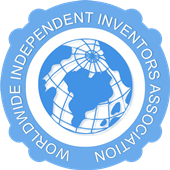- BY Admin
- POSTED IN Articles, Fără categorie
- WITH 0 COMMENTS
- PERMALINK
- STANDARD POST TYPE

George (Gogu) Constantinescu (b. October 4, 1881, Craiova – d. December 11, 1965, Coniston, Cumbria, UK) was an innovator, inventor, complex scientist, specialist in vibration theory, aerodynamics, fluid mechanics and engineer. Romanian, who lived most of his life in the United Kingdom.
STORE OF INVENTIONS & TECHNOLOGIES FOR SALE : https://worldwideinvention.com/store/
He laid the foundation for the theory of sonicity which allows the use of compressibility of liquids (or fluids in general) to transmit power through vibrations (oscillations), by using existing mathematical models in the field of electricity. The compressibility of liquids is generally ignored in physics textbooks because for most practical applications their effect is negligible and the complexity of their inclusion would be too great for the minor effect they have. The first patents were denied in America because the management of the patent institute considered the inventions unfeasible precisely because of the theory of incompressibility of liquids [citation needed].
He applied the theory of sonicity in the development of several inventions: sonic motor, sonic pump, sonic hammer and others. Other achievements include a propeller puller between the propeller blades regardless of its speed and the first automatic gearbox. He actively participated in the construction of British aircraft, Bristol type [1], before the First World War. In this context, on March 29, 1920, the famous newspaper “The Times” published: “On Saturday, Vice Marshal Sir John Maitland presided over a lecture by Mr. Gogu Constatinescu on Sonicity lectures for London County Council teachers Sir John Maitland said that thanks to Mr Constatinescu and the firing device he had invented, we held supremacy over the Germans in the air, as we did “[citation needed].
He was among the first to use reinforced concrete in the construction of buildings in Romania – among the buildings he built: the Casino in Constanța, the Water Castle in Periș, the bridges over the river Siret in Adjud, Răcătău, Roman, [2] Patriarchate Palace , Athénée Palace Hotel, Grand Mosque of Constanța (Carol I Mosque).
Gogu Constantinescu’s account includes about 400 patents, some patented in the USA, Denmark, Switzerland, Austria, Germany, Great Britain, France, Romania, etc., as well as others, which have never been published. A small calculation shows us that from the appearance of the first invention (1907), until the date of passing into eternity (1965), a patent was made in less than 2 months [citation needed].
Although Gogu Constatinescu’s work is of inestimable value, it has not been sufficiently known, in large part due to the secrecy of its predominantly military uses, and on the other hand to the few publications on it. Thus, the first volume published in 1918 in London, in a limited number of copies, was declared secret by the British government, due to the explanations given by the new theory in the field of weapons and means of war.
Source: Wikipedia




